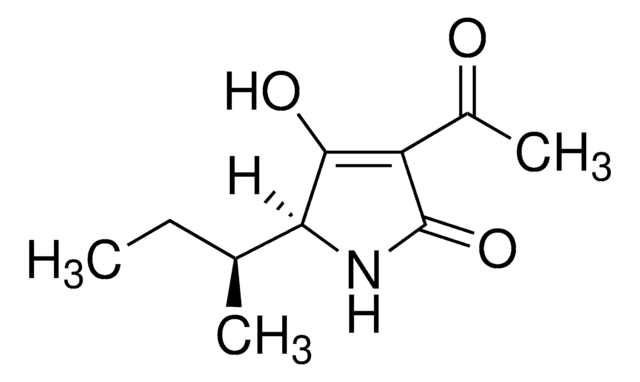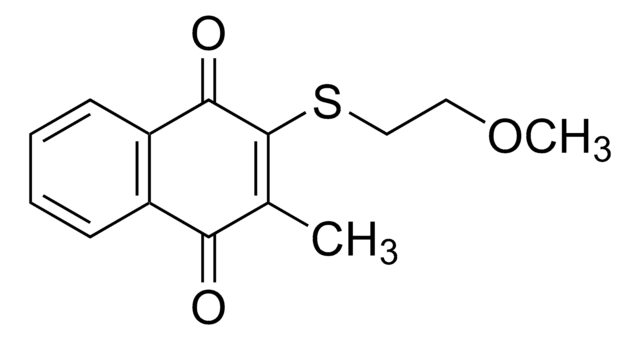47775
Menadione (K3)
analytical standard
Synonyme(s) :
Menadione
About This Item
Produits recommandés
Qualité
analytical standard
CofA (certificat d'analyse)
current certificate can be downloaded
Caractéristiques
standard type fat soluble vitamin
Conditionnement
ampule of 1000 mg
Technique(s)
HPLC: suitable
gas chromatography (GC): suitable
Pf
105-107 °C (lit.)
Application(s)
pharmaceutical (small molecule)
vitamins, nutraceuticals, and natural products
Format
neat
Température de stockage
2-30°C
Chaîne SMILES
CC1=CC(=O)c2ccccc2C1=O
InChI
1S/C11H8O2/c1-7-6-10(12)8-4-2-3-5-9(8)11(7)13/h2-6H,1H3
Clé InChI
MJVAVZPDRWSRRC-UHFFFAOYSA-N
Informations sur le gène
human ... NQO1(1728)
Vous recherchez des produits similaires ? Visite Guide de comparaison des produits
Catégories apparentées
Description générale
Application
Mention d'avertissement
Warning
Mentions de danger
Conseils de prudence
Classification des risques
Acute Tox. 4 Oral - Aquatic Acute 1 - Aquatic Chronic 1 - Eye Irrit. 2 - Skin Irrit. 2 - Skin Sens. 1 - STOT SE 3
Organes cibles
Respiratory system
Code de la classe de stockage
11 - Combustible Solids
Classe de danger pour l'eau (WGK)
WGK 3
Point d'éclair (°F)
Not applicable
Point d'éclair (°C)
Not applicable
Équipement de protection individuelle
dust mask type N95 (US), Eyeshields, Faceshields, Gloves
Choose from one of the most recent versions:
Déjà en possession de ce produit ?
Retrouvez la documentation relative aux produits que vous avez récemment achetés dans la Bibliothèque de documents.
Les clients ont également consulté
Protocoles
Separation of (±)-α-Tocopherol, analytical standard; Menadione (K3), analytical standard; (+)-γ-Tocopherol, analytical standard; Cholecalciferol (D3), analytical standard
Notre équipe de scientifiques dispose d'une expérience dans tous les secteurs de la recherche, notamment en sciences de la vie, science des matériaux, synthèse chimique, chromatographie, analyse et dans de nombreux autres domaines..
Contacter notre Service technique













